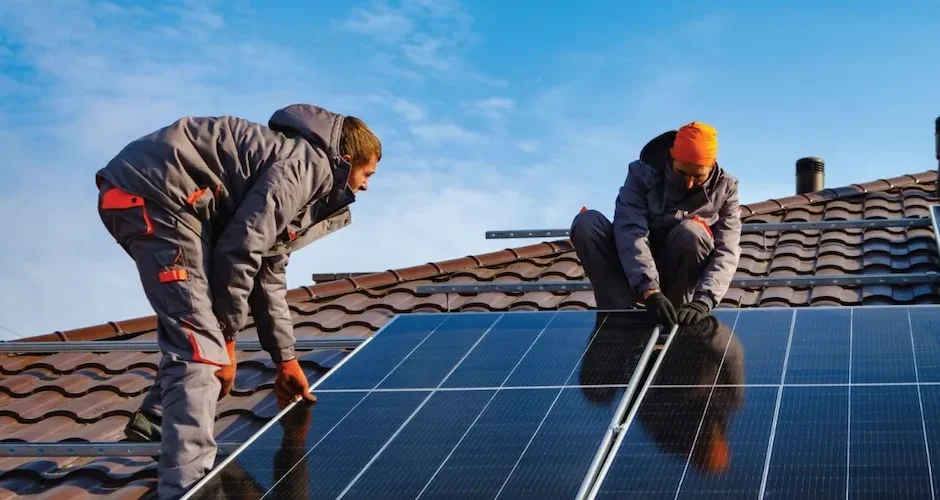Access to electricity is a fundamental necessity in our modern world. It powers homes, schools, hospitals, and businesses, enabling progress and improving the quality of life. However, there are still vast regions in remote and underserved areas around the globe where electricity remains a scarce commodity. In recent years, solar panel installations have emerged as a transformative solution, providing renewable and sustainable energy to these remote locations. In this article, we will explore the significance of solar panel installations in remote areas, the challenges they address, and the positive impacts they have on the lives of the underserved populations.
The Challenge of Energy Poverty
Energy poverty, defined as a lack of access to reliable and affordable electricity, is a pressing global issue. According to the International Energy Agency (IEA), approximately 759 million people worldwide, primarily in sub-Saharan Africa and South Asia, lack access to electricity. In remote and rural areas, the challenges of extending traditional grid infrastructure are immense, leading to energy disparities that affect education, healthcare, economic development, and overall well-being.
The Solar Solution
Solar panels, or photovoltaic panels, have become a beacon of hope for remote communities grappling with energy poverty. These panels capture sunlight and convert it into electricity through the photovoltaic effect. The key advantages of solar panels in remote areas include:
- Abundant Renewable Resource: Sunlight is a virtually limitless resource in many remote regions, making solar power a reliable and sustainable energy source.
- Low Operating Costs: Solar panels have minimal ongoing operating costs, reducing the financial burden on communities.
- Minimal Environmental Impact: Solar energy production generates no greenhouse gas emissions or air pollution, preserving the local environment.
- Modularity: Solar installations can be easily scaled up or down to meet the specific energy needs of a community.
- Reduced Dependence on Fossil Fuels: Solar power decreases reliance on costly and environmentally damaging diesel generators or other fossil fuel-based solutions.
Benefits of Solar Panel Installations in Remote Areas
- Improved Living Conditions: Access to electricity transforms the daily lives of underserved communities. It enables reliable lighting for homes, extends study hours for students, and powers essential appliances like refrigerators and water pumps.
- Enhanced Healthcare: Solar-powered clinics and hospitals can refrigerate vaccines, operate medical equipment, and provide a reliable source of power for critical healthcare services.
- Education Opportunities: Solar-powered schools can offer students access to computers, the internet, and digital learning resources, bridging educational gaps in remote areas.
- Economic Development: Electricity fosters economic growth by enabling small businesses to operate efficiently, promoting entrepreneurship, and creating job opportunities.
- Agricultural Advancements: Solar power can be used for irrigation systems, improving crop yields and food security in remote farming communities.
- Reduced Air Pollution: By replacing kerosene lamps and diesel generators with solar power, communities can reduce indoor air pollution and its associated health risks.
- Resilience: Solar installations provide a reliable source of energy even in the face of extreme weather events, improving community resilience and disaster preparedness.
Challenges of Solar Panel Installations in Remote Areas
While solar panel installations offer significant benefits, they are not without challenges, especially in remote areas:
- Upfront Costs: The initial investment for solar panel installations, including panels, inverters, and batteries, can be a barrier for cash-strapped communities.
- Maintenance: Solar panels require regular cleaning and maintenance, which can be challenging in remote areas with limited access to technical expertise.
- Storage and Grid Integration: Solar power needs effective storage solutions like batteries, and grid integration can be complex in areas without existing infrastructure.
- Climate Variability: Regions with extreme weather conditions may experience reduced solar power generation during adverse weather, affecting energy reliability.
- Technical Knowledge: Local communities may require training to understand and maintain solar panel installations.
- Financing: Access to affordable financing options for solar installations can be limited in remote areas.
Case Study: The Impact of Solar Panels in a Remote Village
Consider a remote village located in a remote mountainous region with no access to the grid. Before solar panel installation, the village faced numerous challenges:
- Homes were without electricity, relying on kerosene lamps and candles for lighting, limiting study hours for children.
- Healthcare facilities lacked reliable power, hindering medical services and vaccine storage.
- The absence of electricity made it difficult for residents to engage in income-generating activities, resulting in high unemployment rates.
The introduction of solar panels transformed the village:
- Solar microgrids were installed to provide electricity to homes, schools, and healthcare facilities.
- Children could study well into the evening, improving their educational opportunities.
- Solar-powered vaccine refrigerators ensured the safe storage of essential vaccines, reducing the risk of disease outbreaks.
- Residents were able to start small businesses, such as charging stations for mobile phones and powering agricultural equipment.
The village experienced improved living conditions, better healthcare access, economic development, and enhanced quality of life.
Conclusion
Solar panel installations in remote areas represent a beacon of hope for communities grappling with energy poverty. These installations offer sustainable, reliable, and environmentally friendly electricity solutions that improve living conditions, enhance education, boost healthcare services, and drive economic development. While challenges such as upfront costs and maintenance must be addressed, the benefits of solar power for underserved populations far outweigh the obstacles. As technology advances and financing options become more accessible, the potential to bring power to remote areas and improve the lives of millions remains within reach, fostering a more equitable and sustainable future for all. Solar panels are not just a source of energy; they are a source of empowerment and progress for underserved communities around the world.



